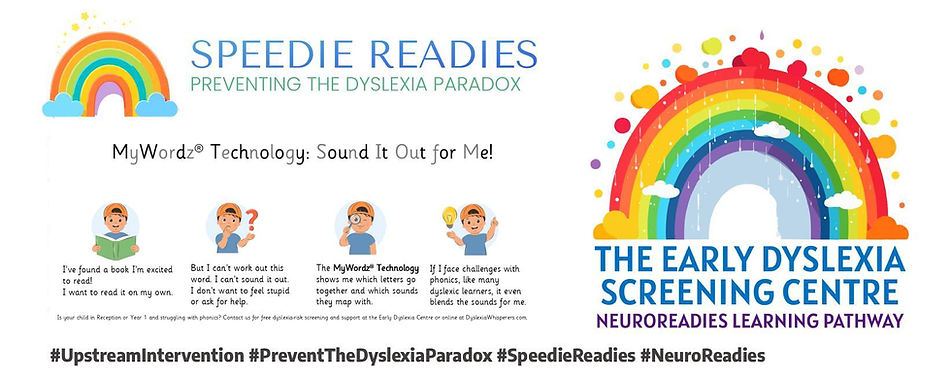
Preventing the Dyslexia Paradox: Why Acting Before Year 3 Makes All the Difference
The dyslexia paradox describes the contradiction that dyslexia risk can be identified early, yet most children are not supported until they have already experienced years of reading failure.
Research in cognitive neuroscience has established that the brain’s capacity to form the neural connections linking speech, print, and meaning is greatest before the age of seven. Dehaene (2009) demonstrated that learning to read reorganises neural circuits involved in visual and auditory processing, but this process becomes less efficient as neural plasticity declines. Hulme and Snowling (2016) showed that weaknesses in phoneme awareness and letter–sound mapping during the early years are among the strongest predictors of later reading disorders, highlighting the need for early, proactive intervention. Seidenberg (2017) emphasised that fluent reading depends on the automation of these mappings through exposure and self-teaching, but this process can only occur if children reach that stage early enough.
By Year 3, prevention is no longer possible. The focus shifts to remediation because the window for early intervention has been missed. Children who have not mastered phoneme–grapheme mapping by this stage are already behind in reading fluency and spelling. They often work harder but achieve less because their brains have not yet automated the link between speech, print, and meaning. This is not a reflection of ability but of timing. The system waited too long to act.
The paradox persists because the current system waits for children to fail before intervening. National policy mandates uniform, programme-based instruction in the early years, assuming that all children will respond equally to synthetic phonics. Yet around one in four do not progress as expected. These children often include those with speech, language, and communication needs or other neurodivergent profiles who require more adaptive, linguistically grounded approaches.
Preventing the dyslexia paradox means identifying and supporting these children early, before difficulty becomes entrenched. Interventions such as Speedie Readies focus on word mapping within meaningful context, helping learners connect speech and print through visual and linguistic cues. The system is designed to move each child towards the self-teaching phase, where reading and spelling become self-sustaining.
Early, individualised support is not about replacing phonics but about making it accessible to all learners. Every child deserves the opportunity to experience success, joy, and independence in reading from the start. The earlier this happens, the less likely it is that dyslexia will define their educational journey.
The Early Dyslexia Screening Centre and My SLCN CIC are Speedie Readies delivery partners.
Prevent the Dyslexia Paradox with Speedie Readies. Every learner can achieve Word Mapping Mastery and experience the joy of reading before KS2


